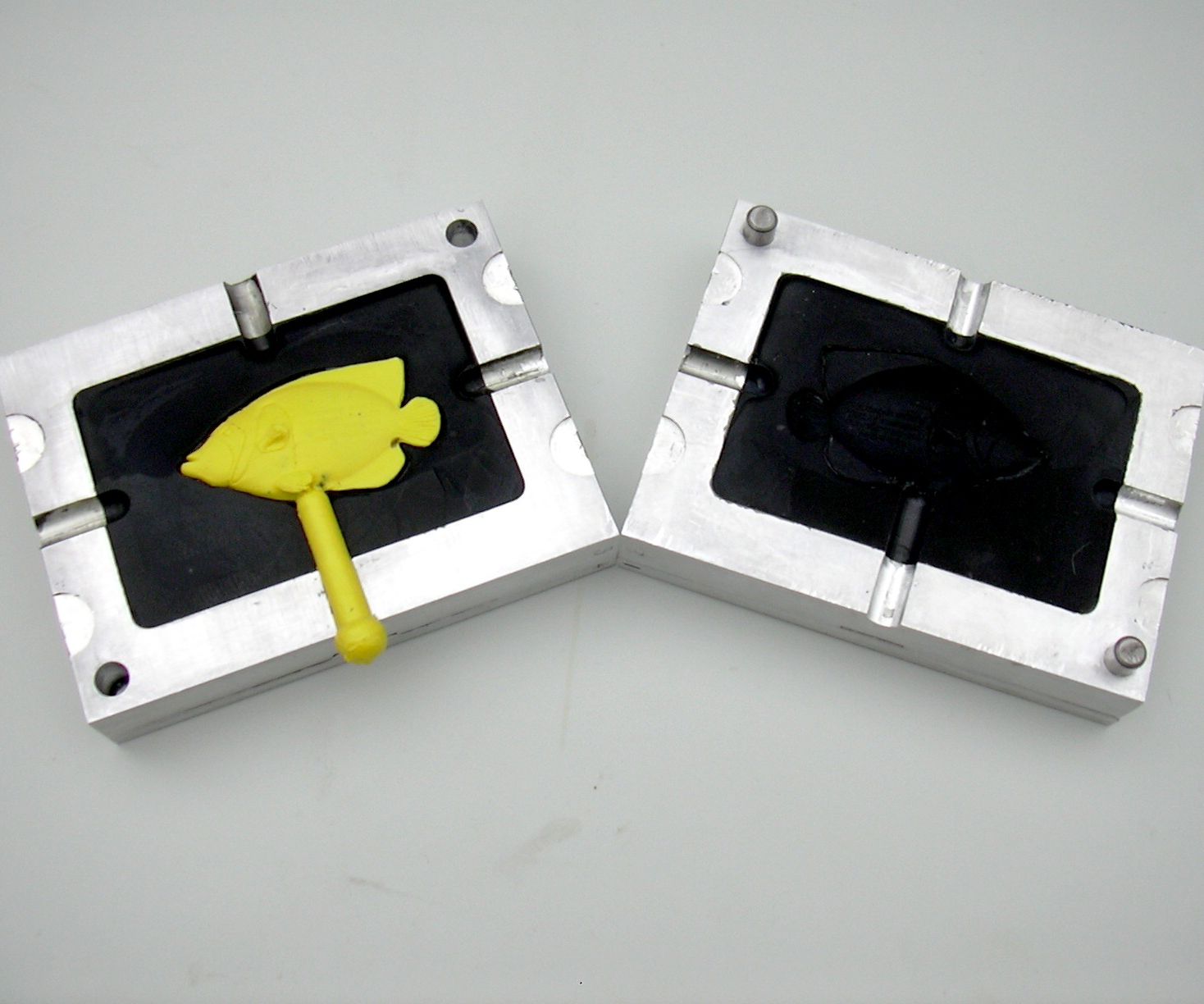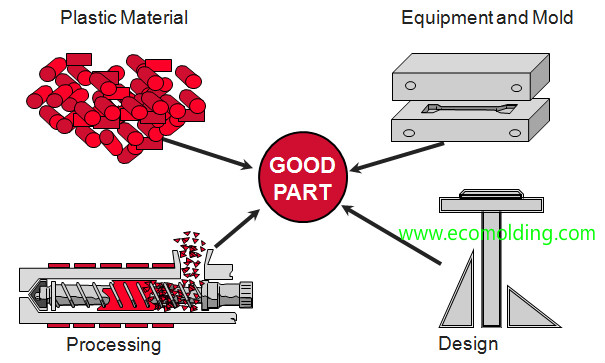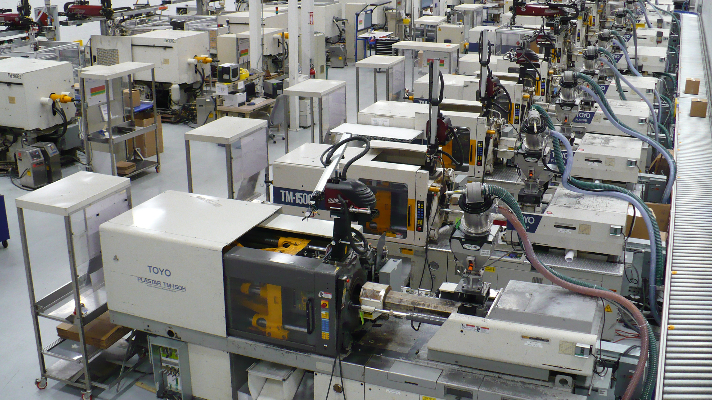Why Plastic Injection Molding Is Necessary for Accuracy and Durability
The Future of Plastic Injection Molding: Trends and Advancements to Watch
As the plastic injection molding market advances, several vital patterns are arising that assurance to improve its landscape. Automation and smart production techniques are established to boost productivity, while the shift in the direction of lasting products mirrors a growing ecological consciousness. Innovations in 3D printing are paving the means for extraordinary style flexibility. These advancements additionally bring forth difficulties that require cautious consideration. Understanding how these elements will certainly interact and affect future techniques is crucial for stakeholders looking to navigate this transformative period properly.
Automation and Smart Manufacturing
As the plastic injection molding industry evolves, automation and wise manufacturing are taking center phase, revolutionizing manufacturing processes - Plastic Injection Molding. The assimilation of advanced innovations such as robotics, IoT (Net of Points), and synthetic intelligence is enabling producers to improve performance, lower functional expenses, and boost item quality. Automated systems simplify workflows, minimizing hands-on intervention and increasing throughput, which is important in fulfilling the rising need for quick production cycles
Smart manufacturing modern technologies promote real-time tracking and data analysis, allowing business to maximize device efficiency and predict maintenance demands. This aggressive method not only decreases downtime however likewise expands the life expectancy of tools. The usage of collaborative robotics, or cobots, improves the flexibility of production lines, making it possible for machines and workers to run side by side safely and successfully.
The adoption of automation in plastic shot molding is not simply a fad but a tactical imperative for companies aiming to remain affordable in a worldwide market. By taking advantage of these modern technologies, suppliers can accomplish greater precision, decrease waste, and adjust quickly to transforming client demands, positioning themselves for lasting growth in a significantly automatic future.
Sustainable Materials and Practices
The press towards automation and wise production has led the way for a better emphasis on lasting products and practices within the plastic injection molding industry. Companies are significantly seeking eco-friendly choices to standard petroleum-based plastics, bring about the fostering of recycled and bio-based materials. These sustainable products not only reduce environmental influence yet also align with customer need for greener products.

Furthermore, collaboration between producers, product distributors, and environmental companies is fostering innovation in the advancement of lasting products that satisfy performance criteria without compromising top quality. As regulations around plastic use come to be more stringent, the industry is poised to adjust by embracing these sustainable methods, making certain long-term stability and reducing reliance on non-renewable resources. The combination of sustainability into plastic injection molding is not merely a fad; it is becoming a necessary part of corporate duty and operational excellence.
Developments in 3D Printing
Current advancements in 3D printing technology are substantially changing the landscape of plastic injection molding. The assimilation of additive manufacturing procedures enables for the fast prototyping of complex geometries that were impossible or as soon as difficult to achieve with conventional methods - Plastic Injection Molding. This capability not just accelerates product advancement cycles yet also lowers product waste, aligning with the expanding demand for lasting production methods
Additionally, the introduction of hybrid production methods, which incorporate 3D printing and injection molding, supplies makers the capability to develop intricate layouts while keeping the performance of automation. This technique allows the manufacturing of personalized parts tailored to specific client demands without giving up the speed Get the facts and scalability that shot molding gives.
Additionally, developments in materials, such as high-performance polymers and composites specifically made for 3D Extra resources printing, are improving the practical capacities of published parts. These materials can stand up to better tension and display improved thermal residential properties, making them ideal for more demanding applications.
As 3D printing proceeds to advance, its assimilation into plastic injection molding processes assures to improve performance, reduce expenses, and foster innovation in item layout, placing suppliers to better meet the difficulties of a competitive market.
Information Analytics and IoT Integration
Information analytics and the assimilation of the Internet of Points (IoT) are transforming plastic shot molding by supplying suppliers with unmatched understandings into their procedures. By leveraging real-time information gathered from interconnected equipments and sensing units, producers can check efficiency metrics, identify ineffectiveness, and optimize production procedures. This data-driven technique promotes anticipating upkeep, lowering downtime and prolonging equipment lifespan.
Furthermore, IoT combination allows for enhanced quality assurance. By continuously tracking variables such as cycle, pressure, and temperature times, suppliers can promptly detect inconsistencies from established parameters and make modifications in real time. This not just improves item uniformity but likewise decreases waste and scrap prices.
The combination of data analytics and IoT modern technologies likewise equips producers to take on more agile production approaches. With access to detailed information analytics, organizations can react to market demands with greater adaptability, adjusting manufacturing timetables and setups as needed. This flexibility is necessary in a rapidly transforming manufacturing landscape.

Modification and Design Versatility
Just how can modification and layout versatility improve the competitiveness of plastic shot molding? In a significantly varied market, the capability to provide customized options is paramount. Personalization enables manufacturers to fulfill specific client requirements, suiting special dimensions, shapes, and functionalities that common products may not fulfill. This versatility not only fosters customer loyalty yet additionally opens up opportunities for new business opportunities throughout various sectors, from automobile to customer items.
Advancements in design innovations, such as computer-aided design (CAD) and rapid prototyping, additional strengthen this trend. These tools make it possible for designers to produce complex patterns and intricate geometries, which can be perfectly incorporated right into the manufacturing process. Therefore, manufacturers basics can react quickly to altering consumer preferences and market needs.
Furthermore, the implementation of modular tooling systems enhances style flexibility, allowing for quicker adjustments in between various product designs without considerable downtime. This flexibility can result in reduced preparations and lower manufacturing prices, making business more agile and affordable. Eventually, welcoming customization and layout adaptability in plastic shot molding not just boosts item offerings but likewise enhances market positioning in an ever-evolving landscape.
Conclusion
The future of plastic shot molding is identified by substantial innovations in automation, sustainable techniques, and cutting-edge materials. Modification via modular tooling and fast prototyping will allow producers to remain receptive and competitive to the dynamic needs of the market.

The future of plastic shot molding is defined by substantial advancements in automation, lasting methods, and innovative products.